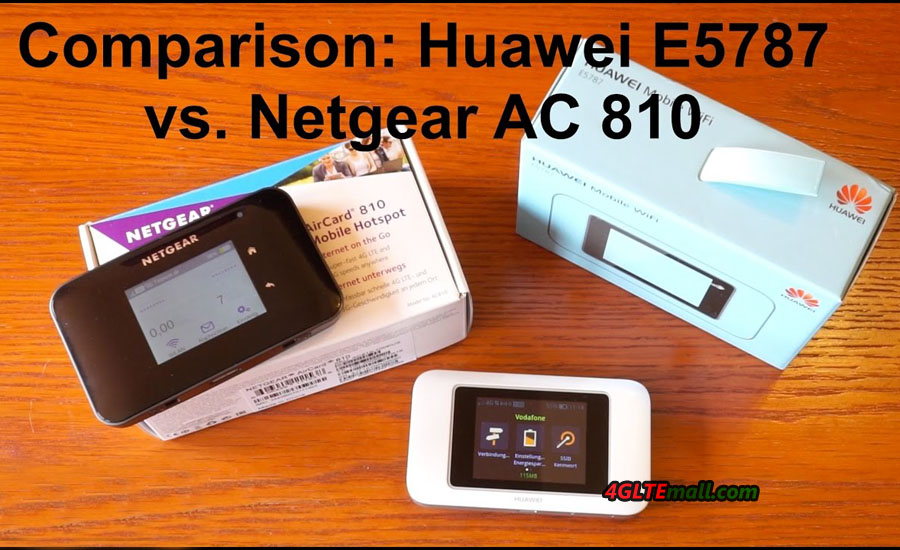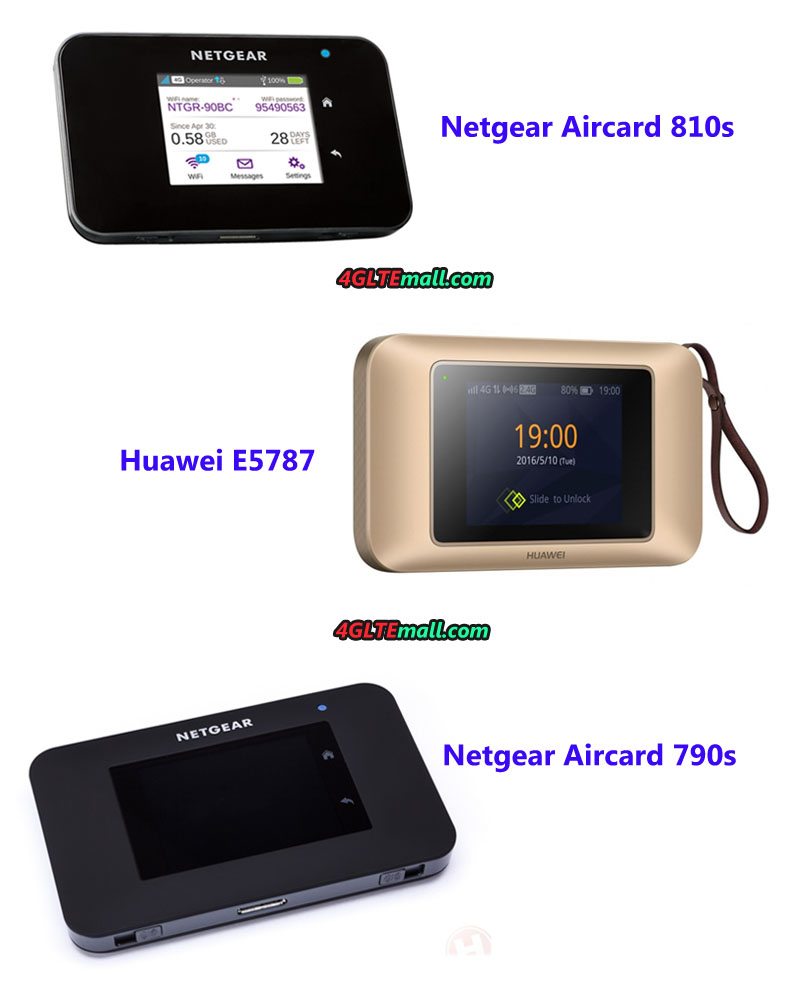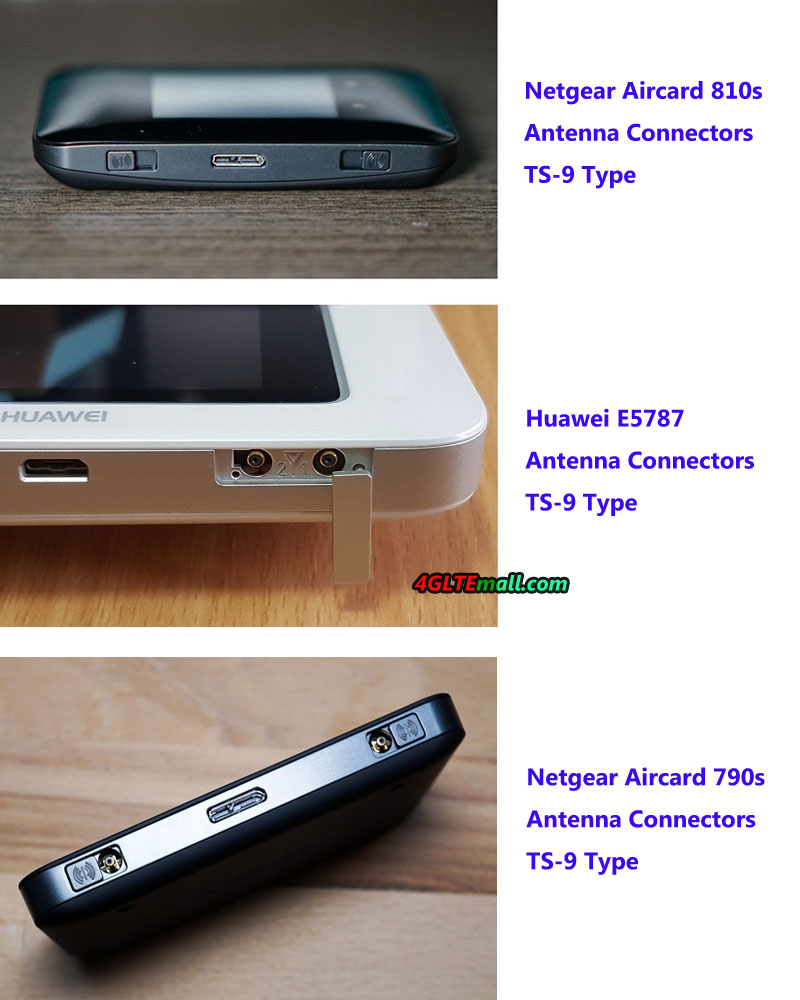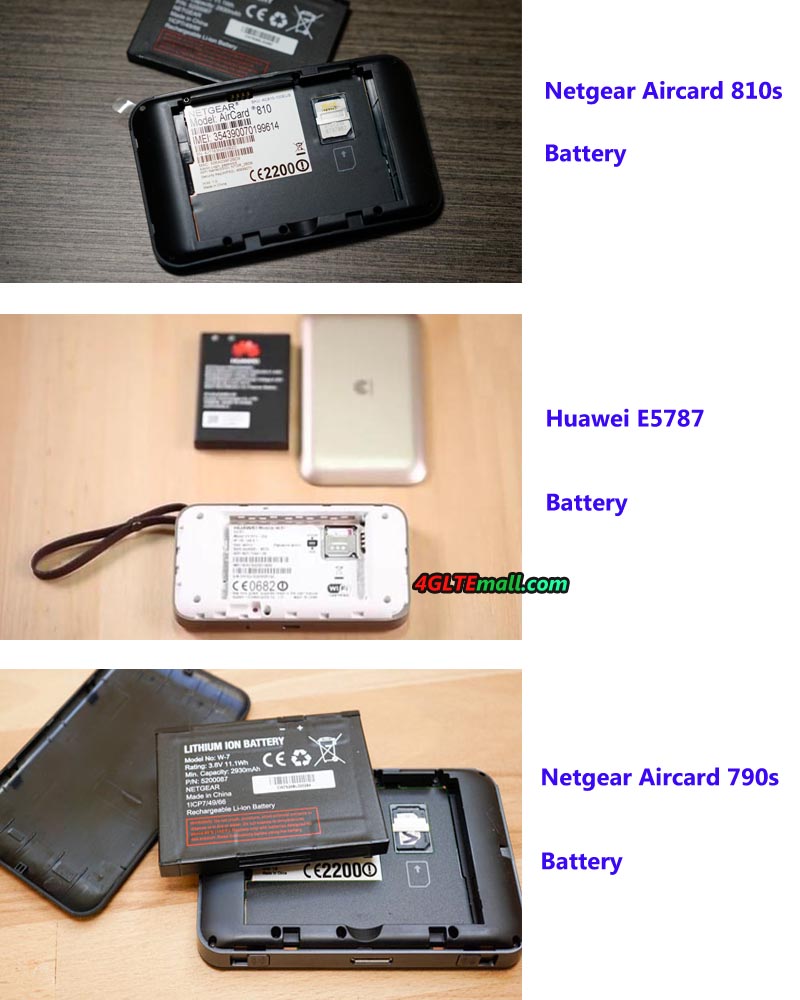As Huawei’s first 4G mobile hotspot with touch screen, Huawei E5787 had attracts customers’ eyes when it’s presented to public. Now the Huawei E5787 had already been available for many network providers in Middle East areas. However, if you had used Netgear 4G Aircards such as Netgear Aircards 790s or 810s, you may the touch screen feature on a LTE mobile hotspot is not a new feature.
On the screen point, Huawei is following the Netgear’s steps. With the touch screen and easy operation, Netgear Aircard 4G hotspots had gained good reputation from many customers. Here comes the questions: what’s the difference between Huawei E5787 and Netgear 4G Aircard(790s & 810s)? In this article, we will have a look at the difference between them.
Appearance
The three 4G mobile hotspots are all in rectangle shape and have a 2.4 inch touch screen on the middle of the front. As we mentioned before, user can operate the device throigh the touch screen. Users can do simple setup without having to log in the web management page. This is also the selling point for them.

The Netgear 810s and 790s have a “home” and “back” button at the right side of the screen while the Huawei E5787 doesn’t have such button. They all have two connectors for external LTE antenna, which is important if the device is used at places with weak signal. The connector type is TS-9. The external LTE antenna can improve the network speed.
Technical Specifications
Huawei E5787 uses Huawei own Hisilicon LTE cat.6 chipset. The Netgear Aircards 790s and 810s both use Qualcomm LTE chipset like the predecessors, but they use different chipset model, Aircard 790s is based on Qualcomm MDM9230 and Aircard 810s is on Qualcomm Snapdragon X12 LTE modem.
With LTE cat.6 chipset platform, Huawei E5787 and Netgear 790s are same level products; both could support peak download speed up to 300Mbps and upload speed to 50Mbps on LTE network. Netgear aircard 810s is on a higher level to LTE cat11 and supporting downlink to 600Mbps, which is almost double of the speed from the E5787 and 790s. And aircard 810s is more advanced with support of 3 band carrier aggregation(CA) while the other two only support dual-band CA.
Perhaps Netgear 810s is targeted on top terminals, the 2G GSM network is not supported and only 3G UMTS/DC-HSPA+ is backward compatible. Both Netgear 790s and Huawei E5787 can switch to 3G UMTS/DC-HSPA+ or 2G GSM/GPRS network when LTE network is not available. Regarding the supported 4G LTE/3G/2G network frequency bands, it depends on the specific model.
The Aircard 810s and Huawei E5787 both support latest WLAN standards ac, but Aircard 790s missed the ac. But they are all with 2 x 2 MIMO technology. The Netgear Aircard 790s and 810S could both support up to 15 wireless devices to access internet while Huawei E5787 only support 10 users.
Battery and SIM card
Unlike Huawei E5786, the Netgear Aircard 790s & 810s and Huawei E5787 are with removable battery. The Netgear 790s and 810s both have the battery of same capacity to 2930mAh; Huawei E5787 has larger battery to 3000mAh. The two Netgear Aircards has the SIM slot for Micro SIM while the Huawei E5787 uses Mini SIM.
Regarding the performance of the network connection, we will do the test later and show full report accordingly.


